Interdisciplinary Garden Bridges Engineering, Food Security
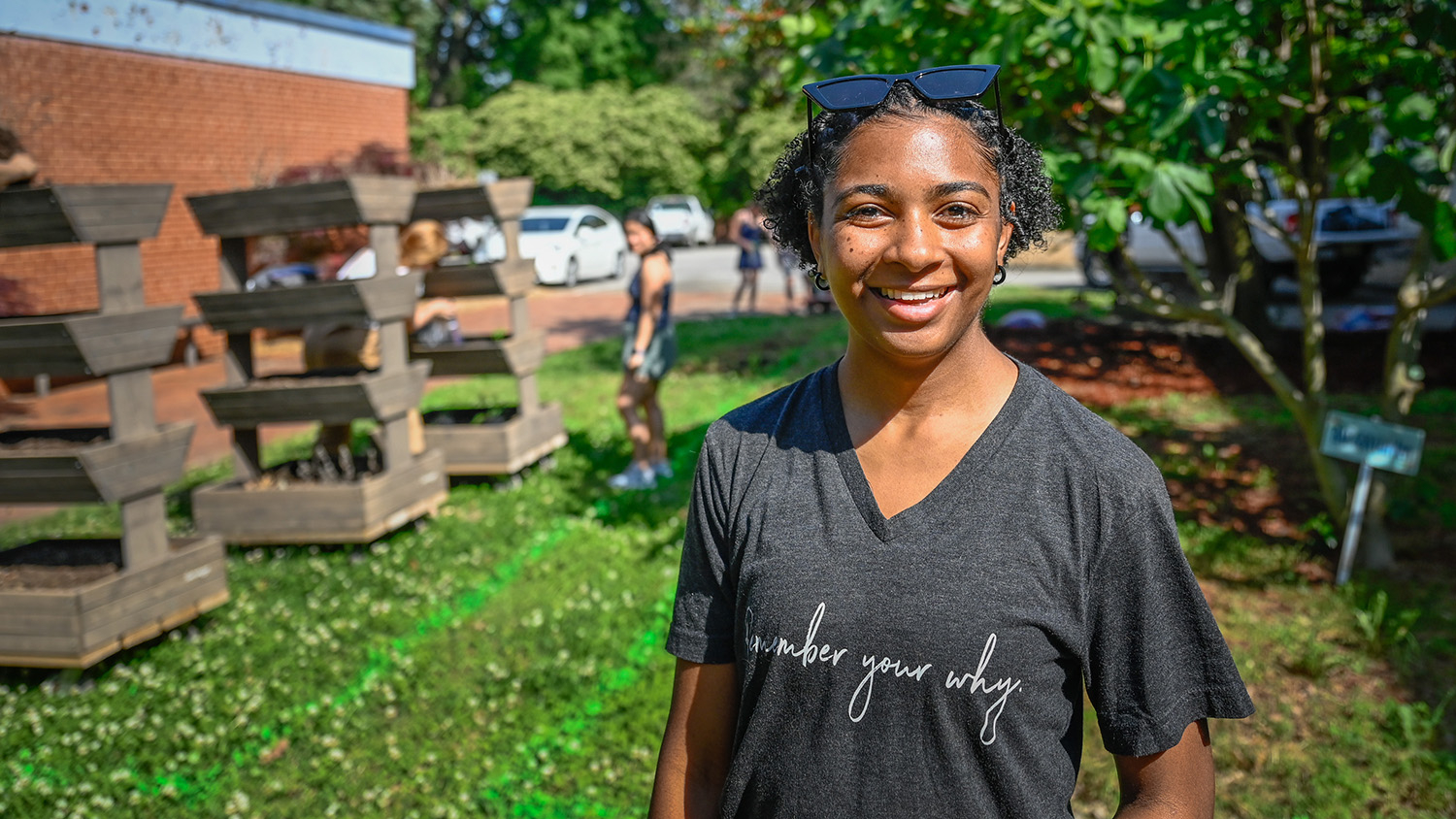
A conventional lawn and courtyard tucked between campus buildings isn’t the obvious place people would expect to learn about sustainability and permaculture.
But that’s the plotline for the space between the Department of Biological and Agricultural Engineering’s (BAE) D.S. Weaver Laboratories and the adjacent Weaver Administration Building.
Graduate student Jasmine Gibson envisions a vibrant pollinator garden next to ripening vegetables and a plot of row crops, complemented by lush grasses where students can relax and reflect.
By spring 2024, this green space will transform from a nondescript patch of grass to an active, diversified garden designed to engage engineering students and promote urban horticulture.
Gibson is leading the redesign and construction of the BAE garden while pursuing her master’s degree through the Department of Horticultural Science at North Carolina State University’s College of Agriculture and Life Sciences.
The Virginia native’s attraction to environmental and sustainability issues began during a high school internship with the Youth Conservation Corps. Her interests expanded to soils, physics and surveying while pursuing a bachelor’s in biological and agricultural engineering from North Carolina A&T State University.
After graduating from NC A&T, Gibson’s passion for the outdoors and eagerness to apply her education led her to consider a stint in the Peace Corps. “I settled on going to Tanzania,” she says. “I was interested in outreach, working with communities and villages, and learning about agricultural techniques outside the United States.”
But COVID halted those plans, causing her to pivot to an internship with the National Resources Conservation Service in Michigan, where she worked directly with farmers and the engineers who designed infrastructure for them.
“That’s when I knew I wanted to focus on the food production side of agriculture,” Gibson says. Her interest in food security and extension work unexpectedly led her to pursue stormwater infrastructure as a master’s concentration in biological and agricultural engineering at NC State.
Bridging the Gap Between Engineering and Food Security
While a BAE student, Gibson noted that the heavy focus on commercial agricultural practices left students interested in community engagement with a limited understanding of how engineering applied to local food systems.
“Current engineering trends focus on commercial, industrial and academic interests. But I want to see more focus on extension, which isn’t often addressed in academic research.”
The BAE Student Garden will supplement the biological and agricultural engineering curriculum by emphasizing the urban agricultural characteristics of engineering while serving as an outreach vehicle for underserved high school students.
Her involvement with the BAE garden began with her board membership in the department’s graduate student association (GSA) and via a permaculture plant design course taught by her primary adviser Anne Spafford, professor and associate department head of horticultural science.
One of the course’s projects was revisioning the BAE garden.
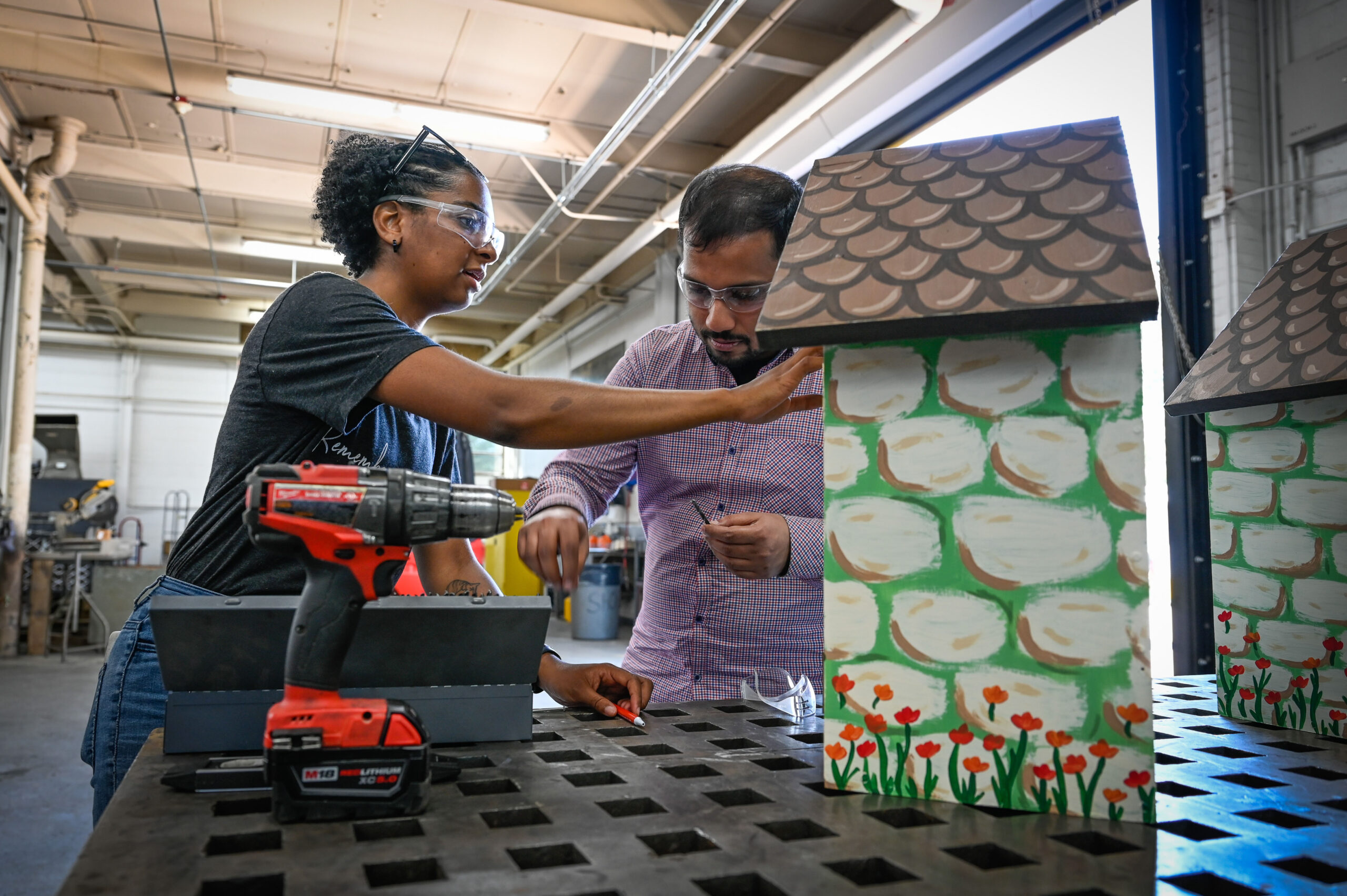
“I noticed BAE had a garden that was growing food but not structured or manageable,” Gibson says. “There was no way for students to engage with the garden beyond exploring its boundaries.”
Gibson changed her major to horticultural science and took on the garden project full time. “My background in engineering relates to urban agriculture and food security, and I want to remain attached to BAE in some way.”
Spring 2023 is her last semester as a BAE GSA board member, and her professional development co-chair position will transition to personal development co-chair to assist future members develop landscape management skills. She continues as a part-time student.
Designing for Growth and Education
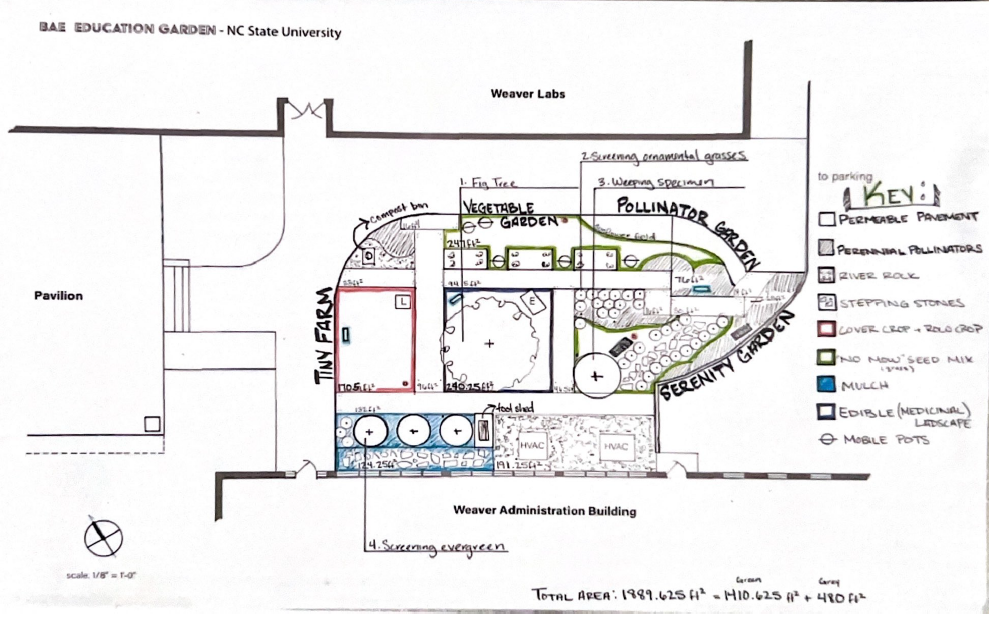
Gibson and Professor Spafford decided on a conceptual design for the 1,890-square-foot plot and are moving forward with surface materials and plant selections.
They plan to incorporate donations of compost, pavement and landscaping grasses from Hoffman Nursery in Rougemont, North Carolina.
The garden’s walking paths will consist of permeable pavers to manage stormwater runoff. The trails will form a connective matrix around each garden station, making the space accessible for all visitors.
Gibson and Neil Bain, BAE research shop supervisor, are coordinating with the university’s landscape management team to complete construction in fall 2023. Once completed, the BAE GSA will maintain the garden.
The Pollinator and Vegetable Gardens
A pollinator garden will feature a collection of native wildflowers, herbaceous perennials and plants adapted to the North Carolina climate. It will also highlight native bees and other beneficial insects interacting with the pollinating and adjacent vegetable garden. These spaces will promote foraging, provide cut flowers for arrangements, and include labels that identify native and other common plants on campus.

Gibson plans to provide companion planting guides for fruits, vegetables and herbs to educate students about intercropping within small-scale agriculture. “One of the biggest problems in agriculture that affects the climate is monocropping,” says Gibson. “Going big with one crop is more damaging than beneficial.”
Monocropping is the practice of growing a single crop year after year on the same land, which can compromise soil ecology. By contrast, BAE GSA students will plant crops that complement each other and provide ground cover while regulating nutrient uptake and moisture retention.
A Space for Respite
Beautiful green spaces can lift the mood and provide additional mental health benefits. A 222-square-foot serenity garden will encourage moments of mindfulness and well-being, helping to reduce the stresses of STEM majors.
“Engineering is a tough, demanding discipline,” Gibson says. “I want to give students a chance to engage with the garden by giving them the space and grace to relax.”
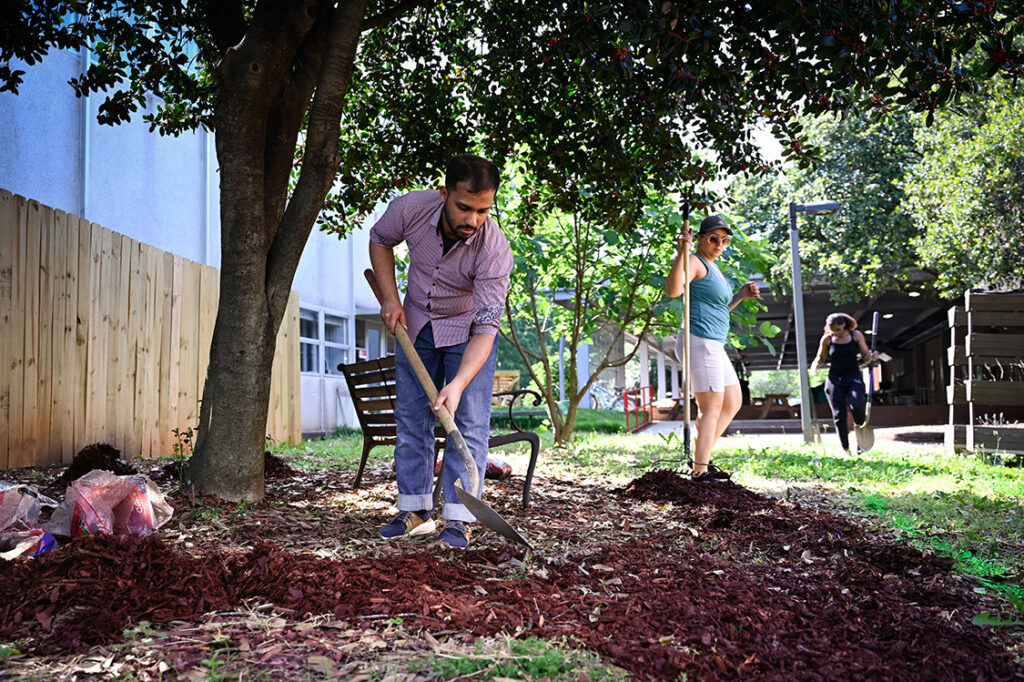
BAE GSA students will plant a no-mow lawn seed mix throughout this space—a blend of cool-season fescue grasses that are drought tolerant and low maintenance.
Adjacent to the serenity garden will stand a legacy fig tree that can trace its roots to its grandparent tree by Kilgore Hall.
“The tree is sentimental to the department,” notes Gibson, adding that faculty, staff and their children have watched it mature and enjoyed its fruit.
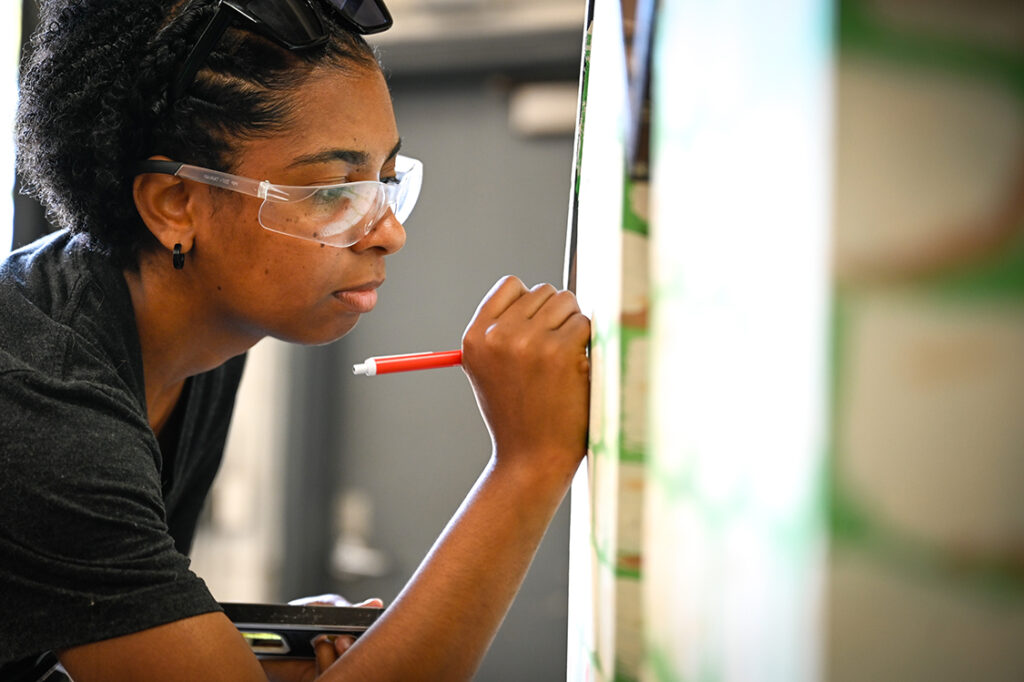
Reclaiming Our Heritage
Gibson describes returning to the sustainable practices of indigenous peoples via a tiny farm of experimental row and beneficial cover crops. This 234-square-foot plot will demonstrate how to reverse commercial agriculture’s climate-changing effects.
“I want to show that [sustainable farming] is nothing new. We are trying to replicate what indigenous people have done for us and give credit where it’s due.”
She’s also striving to remove the stigma associated with farming within the Black community by seeking Black BAE student involvement.
“Farming was our longest career in Africa. It didn’t start with slavery, and we shouldn’t be ashamed of returning to it.”
Elevating Sustainable Permaculture Farming Practices
The future garden will demonstrate the benefits of sustainable agriculture in everyday urban environments.
“I want the garden’s raised beds, information signage and pathways to encourage students to apply their engineering curriculum to solve local food security and sustainability disparities.”
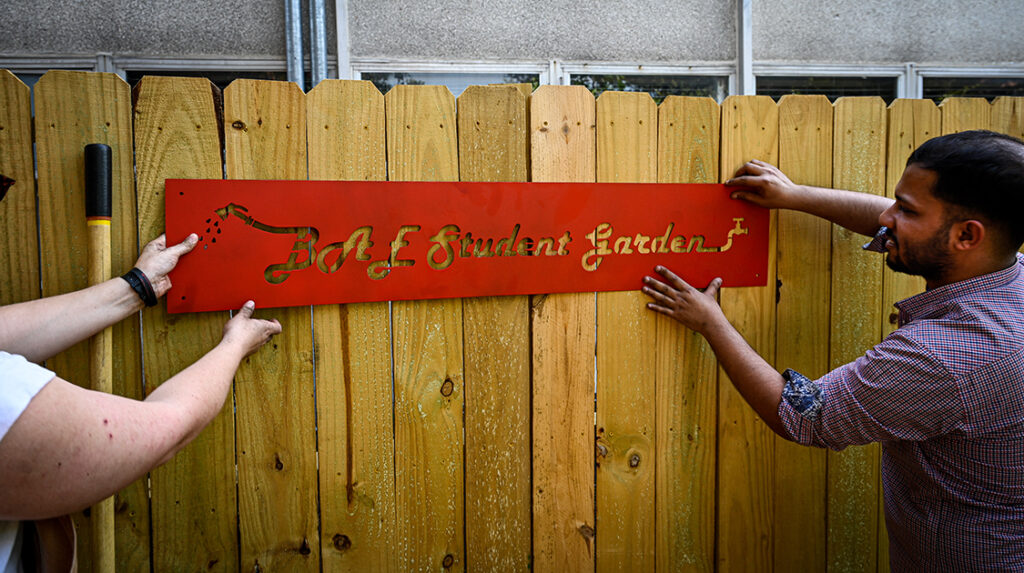
After the BAE Student Garden is complete, Gibson wants to replicate the project at other universities. By returning to Greensboro to work at NC Cooperative Extension or consulting with NC A&T students, she plans to continue identifying gaps in engineering curricula and helping to expand students’ career prospects.
Gibson works part-time as a farmer outreach coordinator with Nature for Justice. The nonprofit company financially and technically assists Black and Indigenous farmers and farm managers achieve climate resiliency.